Cycling uphill can be a daunting challenge, even for experienced cyclists. The combination of gravity and increased resistance can make it seem insurmountable, leaving you exhausted and discouraged.
However, with the proper techniques and mindset, biking uphill can become a rewarding and enjoyable experience. BSXInsight will explore some of the best tips and strategies about how to bike uphill confidently and efficiently.
What Affects On Biking Uphill?
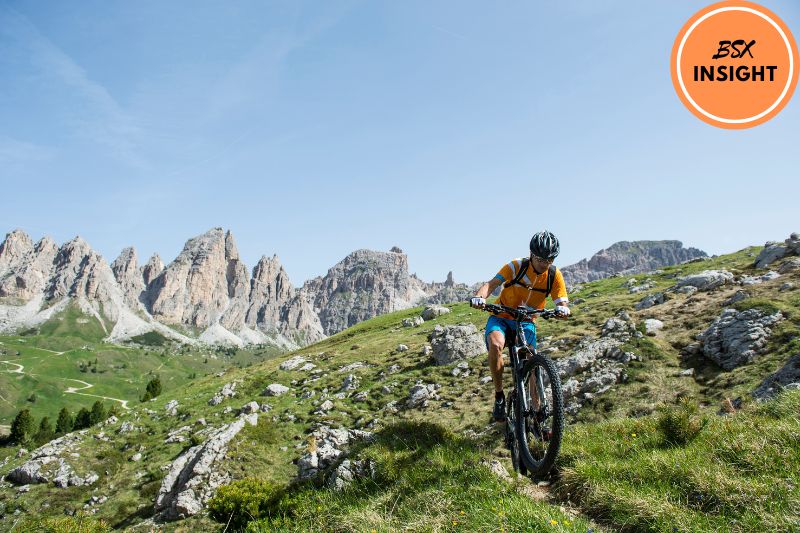
Biking uphill is a unique challenge that requires a combination of physical and mental skills to conquer. Several factors can affect how to ride a bike uphill, including your fitness level, bike setup, and environmental conditions.
Fitness Level
Perhaps the most significant factor affecting your ability to bike uphill is your fitness level. Strong leg muscles, cardiovascular endurance, and core strength are essential for powering through uphill climbs.
If you’re not in top physical shape, you may struggle to maintain the necessary power output to keep moving up the hill.
Consistent training and exercise can help improve your fitness level over time, making uphill cycling easier and more enjoyable.
Bike Setup
The setup of your bike can also impact your uphill cycling performance. The weight, gear ratio, and tire pressure of your bike can all play a role in how to bike up a hill.
A lighter bike with a lower gear ratio can help you maintain your speed and power output up steep inclines. Additionally, properly inflated tires with good traction can provide the grip you need to maintain control on uphill climbs.
Environmental Conditions
The environment you’re cycling in can also impact your uphill cycling performance. Wind, temperature, and altitude can all make uphill cycling more challenging.
Headwinds can slow you down and make it more challenging to maintain your speed and power output.
High temperatures can lead to dehydration and fatigue, while high altitude can make it harder to breathe and maintain your endurance.
How To Bike Uphill?
Know Your Bike Gears
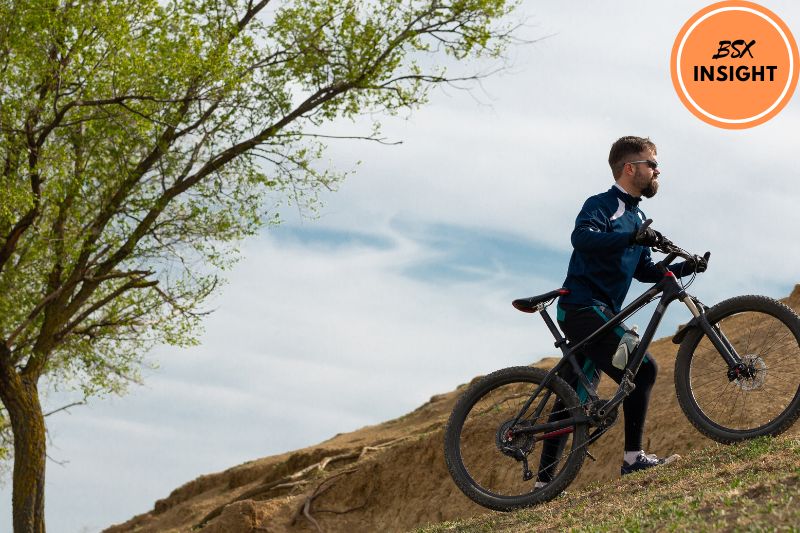
Understanding your bike’s gears is crucial when cycling uphill. Your gears allow you to change the resistance of your pedaling, making it easier or harder to pedal.
When approaching a hill, shift into a lower gear before reaching the incline, which will help you maintain your cadence and power output as you climb.
If you’re not sure which gear to use, experiment with different combinations on flatter terrain before attempting a hill.
Use Your Momentum
Momentum is your friend when cycling uphill. Use the downhill sections before the incline to gain speed and momentum, making it easier to tackle the uphill climb.
Additionally, maintain a steady pace and avoid sudden stops, as it can be more challenging to get moving again on an incline.
Plan Ahead
Before approaching a hill, plan your route and approach. Look for the smoothest possible path, avoiding large rocks or debris.
Additionally, try to avoid sharp turns or sudden inclines, as this can disrupt your momentum and make it more challenging to climb.
When planning your route, consider the distance and elevation gain of the climb. If it’s a particularly challenging climb, break it up into smaller sections, with brief rest stops in between.
Relax and Breathe

Cycling uphill can be physically and mentally taxing. It’s essential to stay relaxed and breathe deeply to maintain your endurance and focus.
Focus on deep belly breaths, inhaling through your nose and exhaling through your mouth. Try to maintain a steady rhythm with your breathing, matching it to your pedaling cadence.
Stand Up
When the incline becomes too steep, standing up can help you maintain your power output and relieve pressure on your back and hips.
Shift your weight back slightly, keeping your elbows bent, and use your core and leg muscles to power through the climb. Keep your eyes focused on the road ahead, and avoid hunching over or tensing up.
Fuel for More Power
Eating a healthy, balanced meal before cycling uphill can provide you with the energy you need to power through the climb.
Additionally, bring a snack or energy bar for a quick boost of carbohydrates and protein when you need it. Staying hydrated is also crucial, especially in hot or humid weather.
Cycling Technique
Maintain a steady pace and focus on pedaling in a smooth, circular motion. Keep your upper body relaxed, and avoid gripping the handlebars too tightly.
Additionally, focus on maintaining your cadence, aiming for 70-90 revolutions per minute. Try to avoid sudden jerky movements or changes in speed, as this can disrupt your momentum and make it more challenging to climb.
Ride in a Group
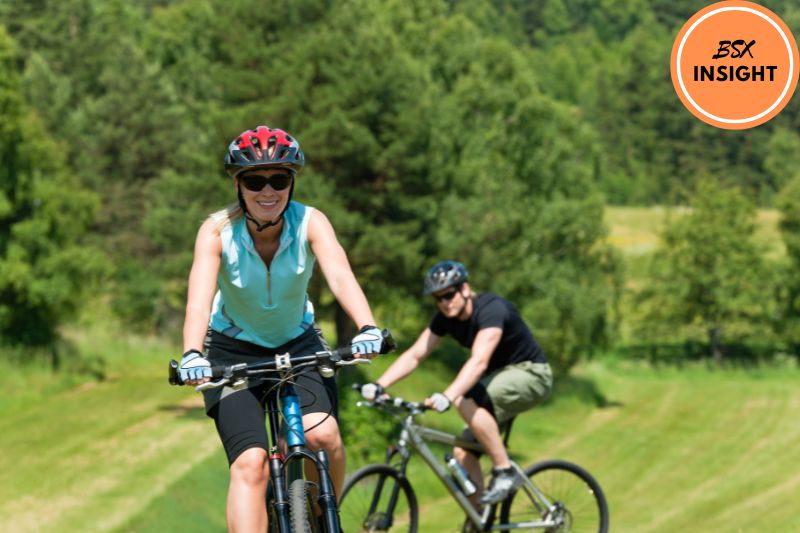
Cycling uphill can be challenging, but riding with others can provide motivation and support. Joining a cycling group or team can also provide additional resources and training opportunities to improve your uphill cycling skills.
Additionally, riding with others can make the climb more enjoyable and less intimidating, allowing you to share the experience with like-minded individuals.
Think Uplifting Thoughts
Finally, don’t underestimate the power of positive thinking when cycling uphill. Focus on your goals and the sense of accomplishment you’ll feel when you reach the top.
Use affirmations and visualization techniques to help you stay motivated and focused on the task at hand.
The Rules of Thumb For Selecting The Right Bike Gear
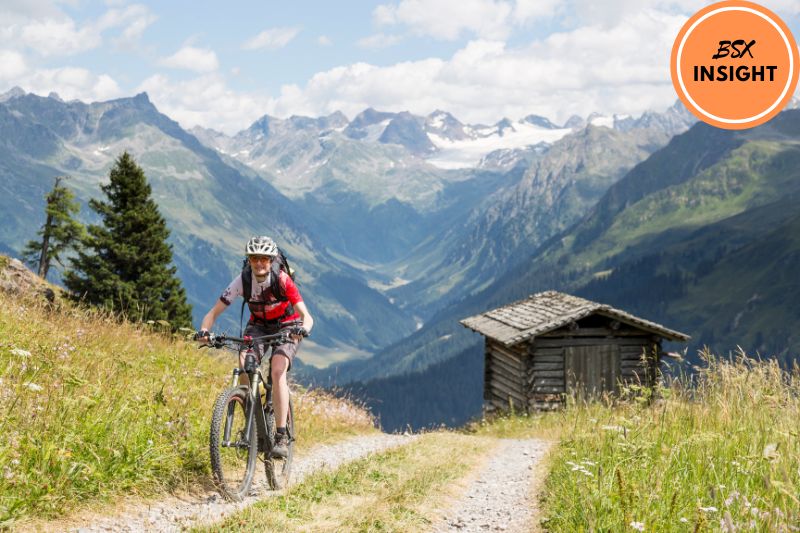
To provide more detail, here is a longer list of the rules of thumb for selecting the right bike gear when cycling uphill:
- Avoid using a gear that’s too high or too low: Using a gear that’s too high will require more effort and energy to pedal, while using a gear that’s too low can result in a loss of power and momentum. Ideally, you want to select a gear that allows you to maintain a steady cadence of 70-90 revolutions per minute.
- Select a gear that allows you to maintain a steady cadence: As mentioned, maintaining a steady cadence is key to conserving your energy and avoiding unnecessary strain on your muscles. Aim for a cadence of 70-90 revolutions per minute when cycling uphill.
- Shift into a lower gear before reaching the incline: To maintain your cadence and power output as you climb, it’s important to shift into a lower gear before reaching the incline. This will help you maintain your momentum and avoid unnecessary strain on your muscles.
- Focus on pedaling in a smooth, circular motion: Rather than pushing down hard on the pedals, focus on pedaling in a smooth, circular motion. This will help you maintain your cadence and conserve your energy rather than wasting it on sudden jerky movements or changes in speed.
- Lean forward and shift your weight back slightly: When cycling uphill, it’s important to shift your weight back slightly and lean forward, keeping your elbows bent and your core engaged. This will help you maintain your power output and relieve pressure on your back and hips.
- Experiment with different gears and techniques: Every cyclist is different, and what works for one person may not work for another. Experiment with different gear ratios and pedaling techniques to find what works best for you, and don’t be afraid to make adjustments as needed.
- Consider the terrain of your route when selecting a bike: If you plan to cycle on hilly or mountainous terrain, a bike with a wider range of gears (such as a triple chainring) may be more suitable. On the other hand, if you are mostly cycling on flat terrain, a bike with fewer gears may be more appropriate.
By following these rules of thumb and practicing good cycling techniques, you can improve how to climb hills on a bike and tackle even the toughest inclines with confidence.
How to Cycle Downhill?
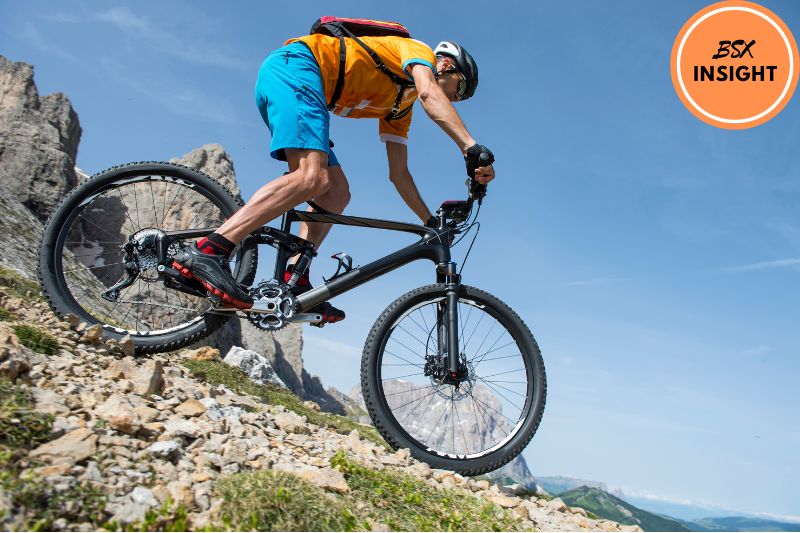
Cycling downhill can be an exhilarating and fun experience, but it can also be dangerous if not approached with caution and the right technique. Here are some tips on how to cycle downhill safely and confidently:
- Control your speed: Before you start descending, check your brakes and make sure they are in good working order. Then, use them to control your speed as you go downhill. Apply them gradually and evenly, rather than abruptly, to avoid skidding or losing control.
- Use your body position: Keep your body relaxed and loose, with your weight slightly back, your elbows bent, and your feet level with the pedals. This will help you maintain stability and control on the bike.
- Look ahead: Keep your eyes on the road ahead and anticipate any obstacles or changes in terrain. This will help you adjust your speed and position accordingly.
- Use your gears: If your bike has gears, shift to a higher gear before you start descending. This will allow you to maintain control and speed without pedaling too fast.
- Stay centered: Keep your weight centered over the bike, with your hips over the saddle and your hands on the handlebars. This will help you maintain balance and control as you go downhill.
- Avoid sudden movements: Avoid sudden movements, such as sharp turns or quick stops, as they can cause you to lose control of the bike.
- Be aware of others: If you are cycling on a shared path, be aware of other cyclists, pedestrians, and vehicles around you. Signal your intentions, and be prepared to adjust your speed and position as needed.
Cycling downhill can be a thrilling experience, but safety should always come first. By following these tips and approaching downhill cycling with caution and the right technique, you can enjoy the ride while minimizing the risks.
FAQs

Is it necessary to stand up while cycling uphill?
It is not necessary to stand up while cycling uphill, but it can be helpful in certain situations.
Standing up can help you generate more power and momentum, especially when the incline is steep.
However, standing up can also be tiring and put more strain on your back and legs, so it’s important to find a comfortable and efficient pedaling rhythm.
Can I cycle uphill if I am out of shape?
Yes, you can cycle uphill even if you are out of shape, but it may be more challenging. It’s important to start slowly and gradually increase your pace and distance as you build strength and endurance.
Focus on maintaining a steady pedaling rhythm and using the right gears and technique to conserve energy.
How can I breathe properly while cycling uphill?
Proper breathing is important when cycling uphill to help you maintain a steady flow of oxygen to your muscles.
Breathe deeply and rhythmically, inhaling through your nose and exhaling through your mouth.
Try to synchronize your breathing with your pedaling rhythm, taking deeper breaths when you need more power and exhaling slowly when you need to conserve energy.
How can I improve my cycling technique for uphill riding?
There are several ways to improve your cycling technique for uphill riding, including practicing on gradual inclines, using the right gears, maintaining a steady pedaling rhythm, and keeping your upper body relaxed and stable.
You can also work on your core strength and flexibility to help you maintain a comfortable and efficient riding position.
Conclusion
In conclusion, cycling uphill can be a challenging but rewarding experience. By knowing your bike gears, using your momentum, planning ahead, relaxing and breathing, standing up, fueling for more power, using proper cycling techniques, riding in a group, and thinking uplifting thoughts, you can improve your performance and make the most of your uphill rides.
Remember to start slowly and gradually build your strength and endurance, and always prioritize safety and comfort.
With practice and perseverance, you can conquer any hill and enjoy the thrill of the climb. Happy cycling.

